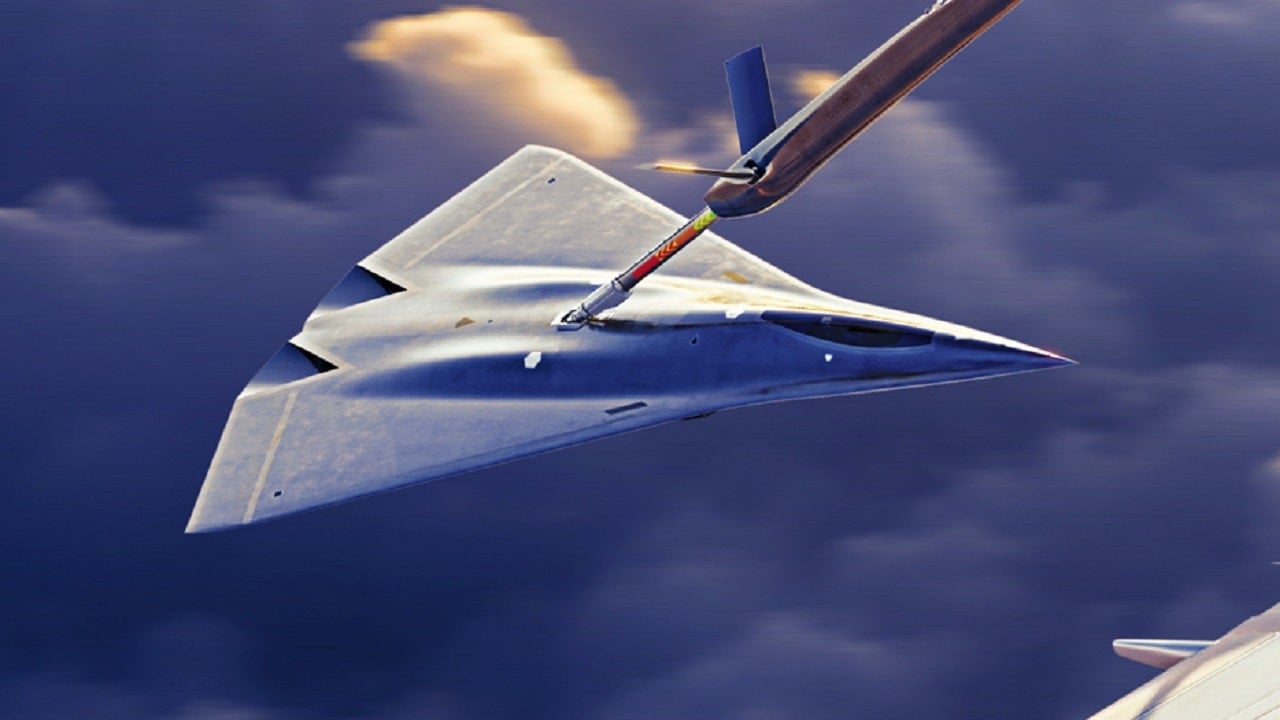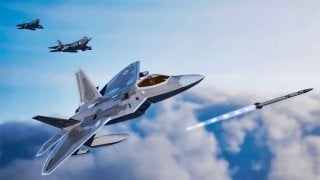Is the U.S. Air Force Too Old and Too Small?
Unlike other branches of the U.S. military, which saw spikes in service-entry rates following the 9/11 terrorist attacks, the U.S. Air Force actually grew smaller.
In light of Russia’s ongoing invasion of Ukraine and Hamas’ war against Israel, the potentiality for larger-scale conflicts that could bring in the U.S. is increasing. While the Pentagon has so far only approved whopping amounts of funding and military aid to Kyiv and has deployed two carrier strike groups to the Middle East amidst these two pressing geopolitical conflicts, war could be on the horizon. Additionally, tensions between Beijing and Washington have been ramping up for years and analysts widely assert that kinetic conflict would erupt pretty much at any time over the South China Sea between these two powers. The U.S. Air Force’s arsenal of aircraft plays a critical role in both America’s deterrence and offensive strategies. Considering recent deficiencies in the service ranging from personnel, retention and aging equipment, would the Air Force be up to the task if the U.S. does engage in war?
A History of the U.S. Air Force
Following the enactment of the 1947 National Security Act, the Air Force was officially established as a separate branch of the U.S. Armed Forces.
Prior to this legislation, the air service branch performed as part of the U.S. Army Signal Corps in the early 20th century. The service’s mission components were originally divided into four groups- Tactical Air Command, Strategic Air Command, Air Defense Command, and Military Air Transport Service.
Today, the Air Force follows five primary principles: air superiority, mobility and lift, intelligence, surveillance and reconnaissance, global strike and command and control.
Air Force Struggles
As detailed in a thorough Heritage Foundation report titled The 2023 Index of U.S. Military Strength, the Air Force has struggled over the last few decades.
Unlike other branches in the military, which saw spikes in service-entry rates following the 9/11 terrorist attacks, the Air Force actually grew smaller. Retention problems have only been exasperated since then. In 2022, the service was short 1,907 pilots of its 21,000 goal.
One year prior, the discrepancy was slightly shorter by roughly 260 pilots. It is also important to note that the Air National Guard and Air Force Reserve are facing a similar downward spiral in sign-ups. If a war were to emerge, those units would likely be called upon by defense leaders to round out active duty deployments. With a shrinking force, the readiness of the service is diminished.
A massive pilot shortage is not the only contributing factor to the service’s struggles. For years, the Air Force was short thousands of maintainers. Without these critical positions filled, the ability to preserve airframes and ensure their safety in flight is severely hampered. In 2018, the service was only able to fill 89% of its maintenance positioned shredded to fighters, whereas in the past, this number was closer to 95%.
Without the proper staffing, many jets lingered in holding patterns for long stretches of time, making them less capable than desired.
Size-wise, the U.S. Air Force Is Struggling
Perhaps the most pressing issue impacting the Air Force’s readiness is its lack of advanced airframes.
Back in 2018, the National Defense Strategy tasked each military branch to prepare for a potential large-scale conflict with a well-matched adversary. The Air Force carried out its own study and figured out that it would need to grow by at least 25% to succeed in any future potential war.
Specifically, the service detailed that it would need an additional 50 bombers, 15 airlift platforms, 210 air refueling aircraft, and 182 fighters. While the budget for research, development, test and evaluation has grown over the last few years, the Air Force is making huge cuts to its existing platforms.
As explained in the Heritage Foundation report, the service hopes to cut nearly 1,500 aircraft from its fleet, which would equate to a net reduction of 19% of its total fighter fleet after limited procurements.
Old Planes: The USAF Fighter Arsenal Is Quickly Dwindling
As part of this reduction plan, the Air Force wants to retire 421 of its F-22 Raptors. As the world’s first-ever fifth-generation platform, the Raptors are considered by many to be the most formidable jets to ever take to the skies. Even though these fighters are a couple of decades old, independent analysis of the F-22’s combat and stealth capabilities are believed to be superior to China and Russia’s own fifth-generation platforms.
The Raptor is arguably the most versatile fighter in its generation; from its high degree of maneuverability and its high thrust-to-weight ratio to its M61A2 20m Gatling gun and other armaments, the F-22 is a stand-out jet.
Additionally, this powerhouse platform also possesses the smallest radar cross-section of any fifth-generation platforms, including the newer F-35 Lightening II. This feature makes the fighter extremely difficult for adversarial aircraft to detect. Therefore, its pilots can engage enemy fighters from beyond visual range before its enemy is even aware of its presence. Notably, the Raptor is also the only fifth-generation platform in the Air Force’s arsenal that has not been procured by other nations. Even North Atlantic Treaty Organization (NATO) member states don’t fly F-22s.
Despite these capabilities, the Air Force has still placed an expiration date on its Raptors.
"By about the 2030 timeframe, you're talking about a 40-year-old platform [in the F-22], and it's just not going to be the right tool for the job, especially when we're talking about defending our friends like Taiwan and Japan and the Philippines against a Chinese threat that grows and grows," noted Lt. Gen. Clinton Hinote, the Air Force’s deputy chief of staff for strategy, integration and requirements, told Defense News in May.
What About the NGAD program?
The Air Force is working towards its Next-Generation Air Dominance (NGAD) program. However, perhaps the service putting all its eggs in one basket is not the best overall strategy.

The sixth-generation fighter will reportedly fly alongside a consortium of unmanned aerial vehicles (UAVs), “winged drone men” when in service. The service hopes its most cutting-edge program to date will be introduced to service by the end of the decade. In the meantime, however, the world is witnessing instability in the South China Sea among the ongoing wars in Ukraine and Israel. Without a strong Air Force, both quantitatively and qualitatively, America’s national security is in jeopardy.
About the Author
Maya Carlin is an analyst with the Center for Security Policy and a former Anna Sobol Levy Fellow at IDC Herzliya in Israel. She has by-lines in many publications, including The National Interest, Jerusalem Post, and Times of Israel. You can follow her on Twitter: @MayaCarlin.
All images are Creative Commons.


